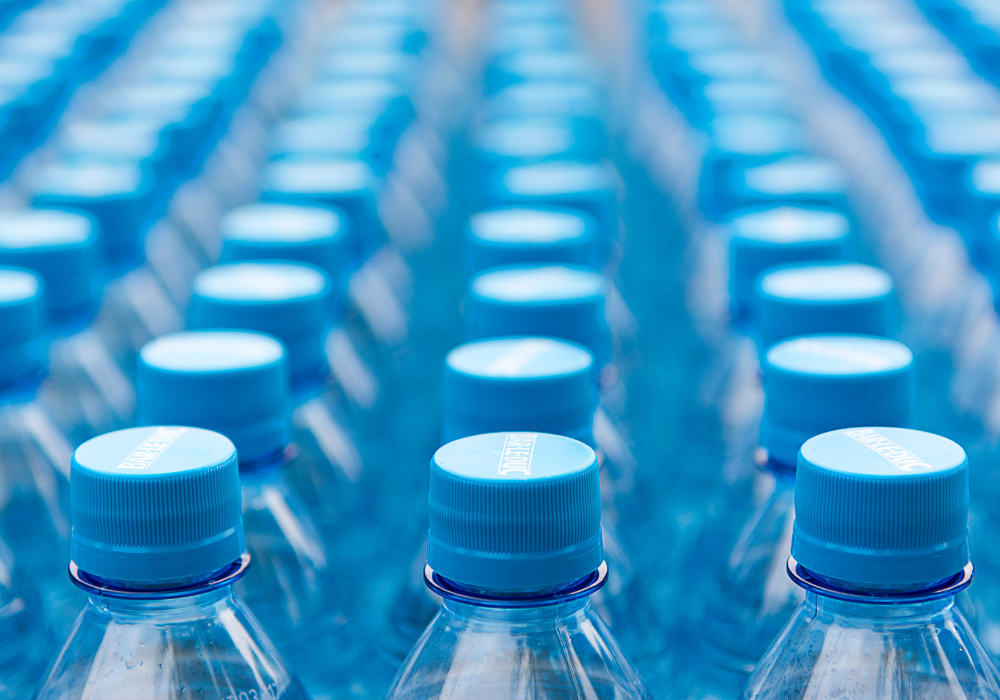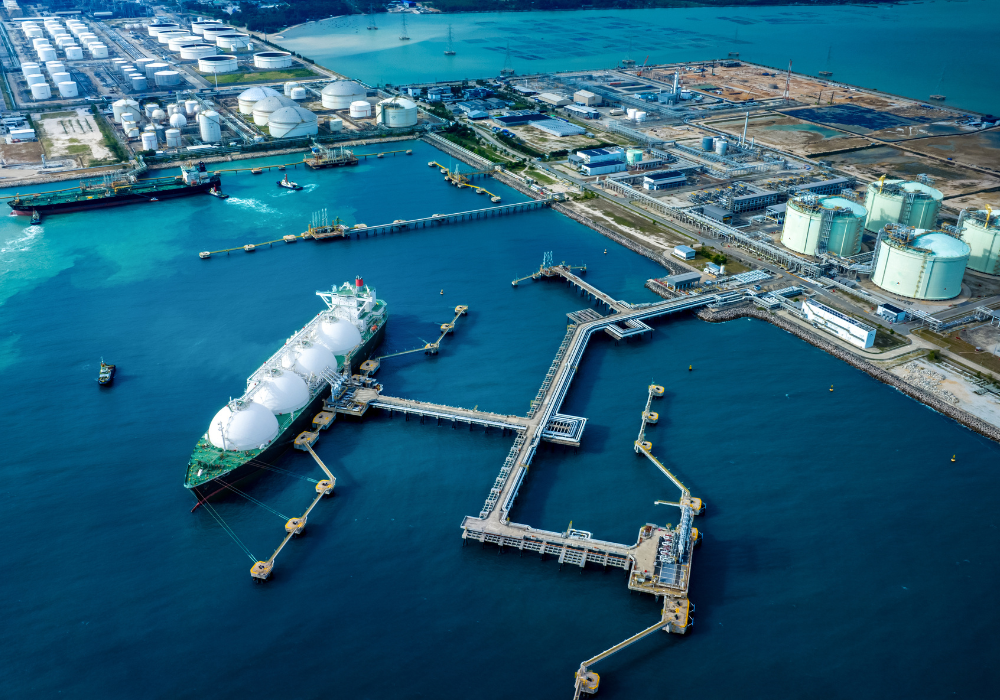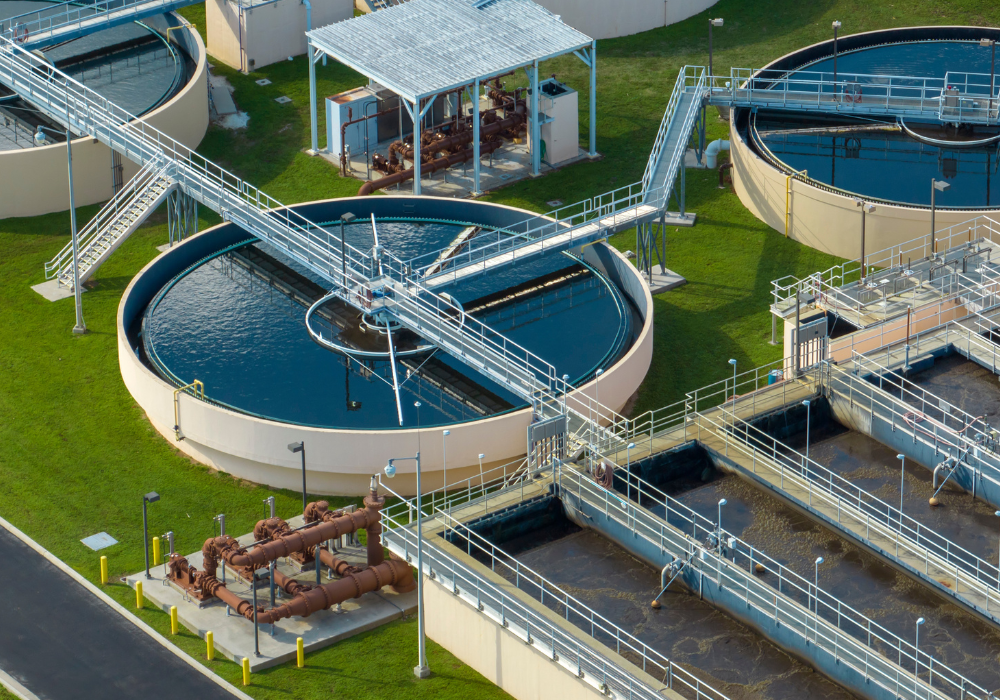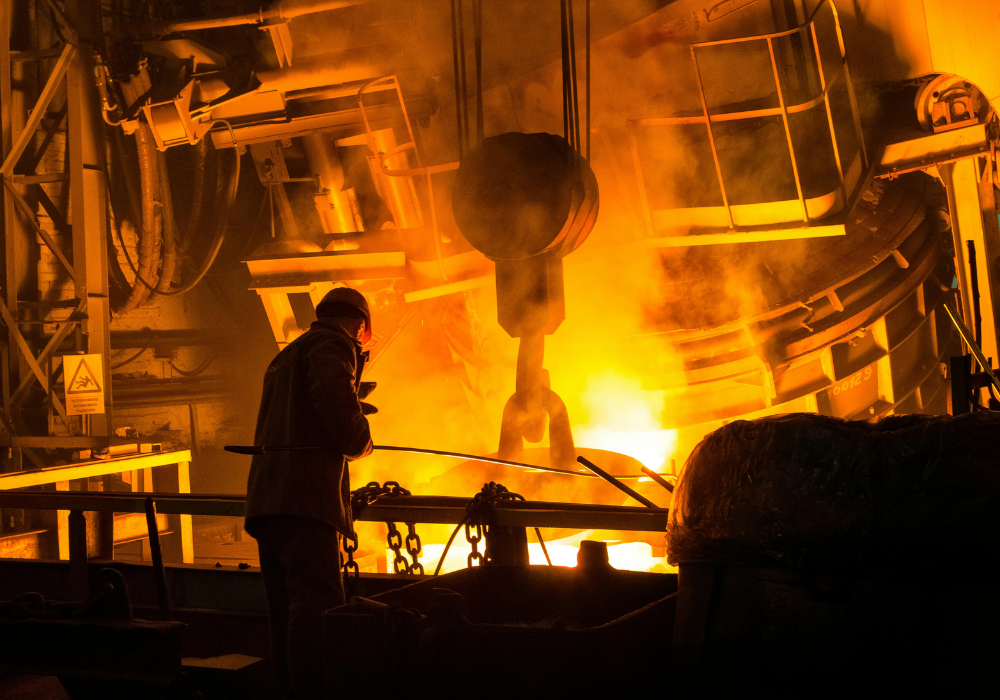

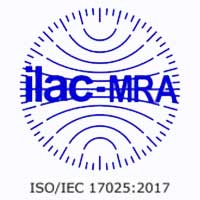
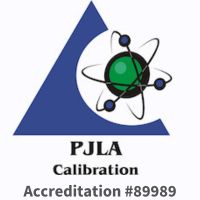


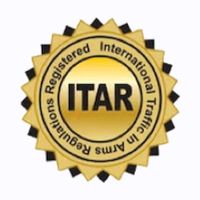
Contact Us
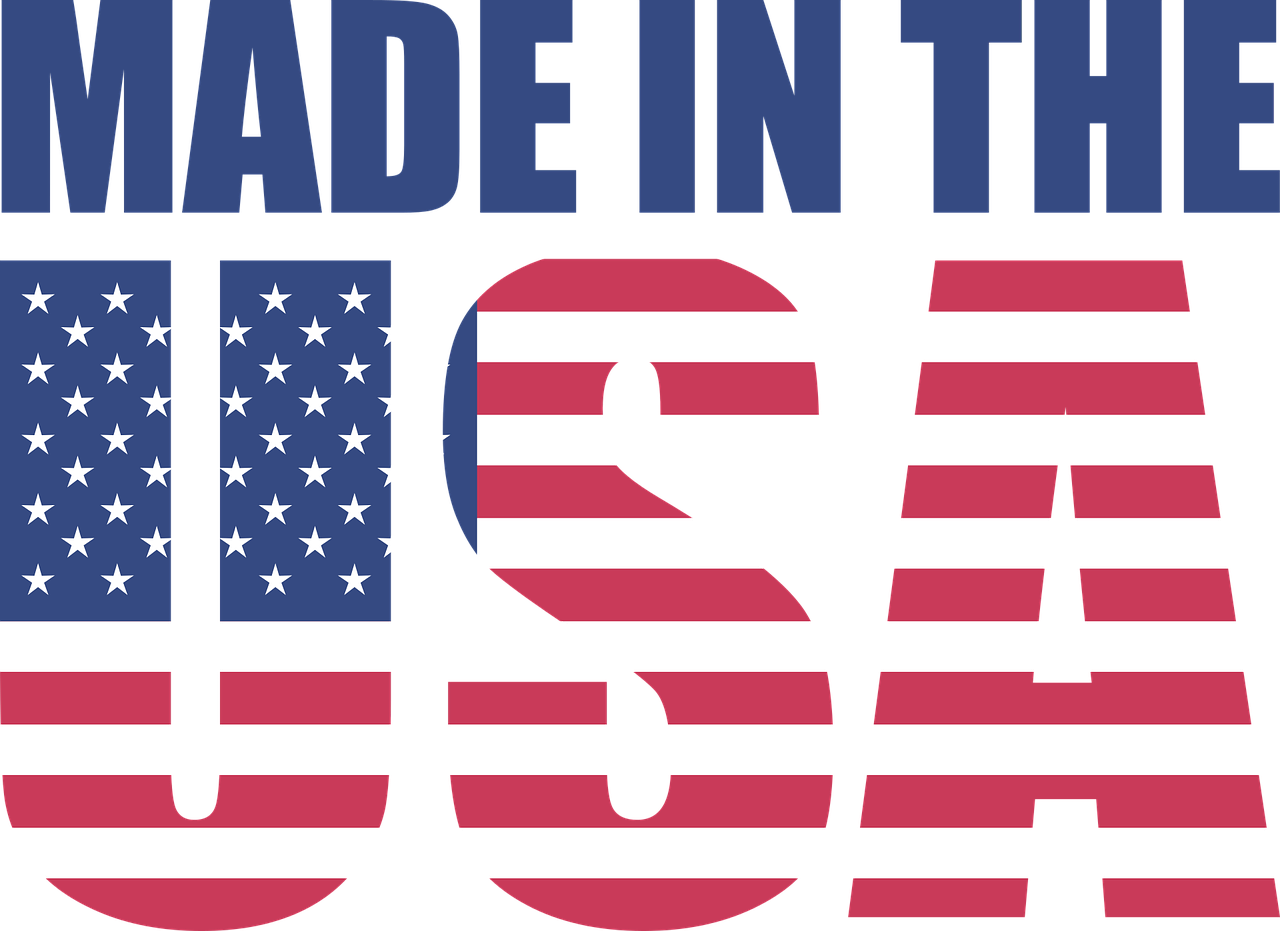
Products/Services
Temperature Transmitters
Wire Harnesses
Temperature Sensors
Fiber Optic Sensor Systems (Partner Company)
Thermocouple/Extension Wire
Temperature and Process Controllers
Specialty Metals
Technical Resources
Nanmac Sensors in Tokamak Reactor SystemComparison of Temperature Sensors & Response TimesProperties of Refractory & Ceramic MaterialsRefractory Metal Resistance to Corrosive Materials - GuideThermocouple Alloy - Use & CharacteristicsTemperature Conversion Chart - Melting Points of MetalsA ultra fast thermocouple used to measure: squibs, ignitors, propellants, and rocket nozzlesNanmac High Performance ThermocouplesThermocouples and Extension Grade WireLeading Cause of Errors in Temperature MeasurementThermocouple Standards & CalibrationsThermocouples in Furnaces & OvensSelecting the Right ThermocoupleMold temperature and heat flux measurements during the production of glass containersCare & Use of Nanmac Eroding ThermocouplesNanmac Short Form Article on Using ASTM StandardsWhen Thermocouples Fail
Whitepapers / Nanmac High Performance Thermocouples
NANMAC
Quality
Performance
Solutions
This presentation will consist of six sections:
- Nanmac history and Corporate overview
- General thermocouple & RTD theory
- High Temperature Thermocouples
- Ultra High Temperature Thermocouples
- High Performance Thermocouples
- Nanmac Quality Program
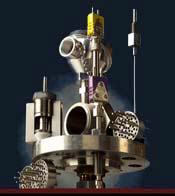
NANMAC
History and Corporate overview
NANMAC
History
- Nanmac was established in 1956 by a group of scientists to develop high performance temperature sensors
- Initial focus was on Government research & Military applications
- Many of these have become commercial applications – plastics, material evaluation, heat transfer studies, incineration
- Nanmac holds various patents on temperature sensors, erosion gages, and multi-function sensors.
- Nanmac is a Veteran owned company

NANMAC
Corporate
Headquarters:
Nanmac Corporation
425 Fortune Blvd
Suite 206- Milford, MA 01757
Phone: 1.800.786.4669
International: 001.508.872.4811: - Fax: 1.508.879.5450
[email protected]
- Nanmac – Asia
Room B603, Fahuamen Building, 555
Fahuazhen Road Changning District
Shanghai, P.R. China 200052 - Tel: 021-51186096
Fax: 021-62801021
www.nanmac.com/cn
[email protected]
Primary Contact: Vivian Wu
Corporate - Center of Excellence
Facility Overview
- 12,000 square-foot facility
- Company leased building
- 30 employees
- Calibration Lab
- Pressure and Vacuum Testing
Key Operations
- Executive Management
- Research and Development
- Assembly and Testing
- Sales and Marketing
- Finance and Administration
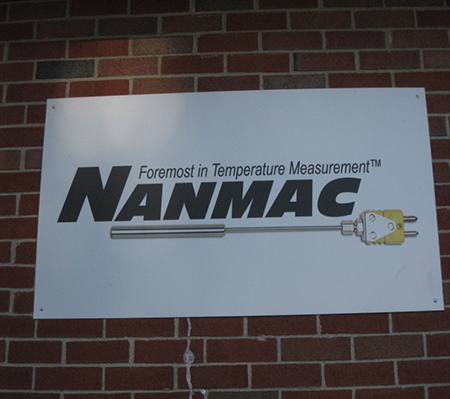
NANMAC
General Thermocouple & RTD Theory
General Thermocouple Theory
- Thermocouple circuit is made from two metals of different materials being electrically connected. This connection is called the thermocouple junction.
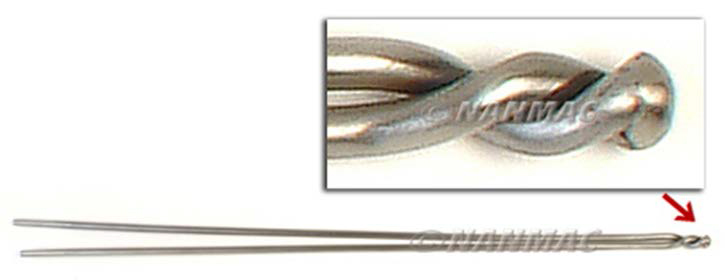
- The output of a thermocouple is a millivolt signal. The higher the temperature, the higher the millivolt output, this is called Electro Motive Force (EMF).
- The type of metals used to make the thermocouple element determines the temperature range of the thermocouple.
- Each thermocouple “Type”, has a specific accuracy as determined by the US National Institute of Standards (NIST). Accuracy is based on a percentage of the temperature being measured.
General Thermocouple Theory
| ANSI Code | Alloy Materials | Range |
|---|---|---|
| Type J | Iron/Constantan | 0 to 750 C |
| Type K | Chromel/Alumel | 0 to 1250 C |
| Type T | Copper/Constantan | 0 to 350 C |
| Type E | Chromel/Constantan | 0 to 900 C |
| Type N | Nicrosil/Nisil | 0 to 1300 C |
| Type R | Pt-13%Rh/Pt | 0 to 1450 C |
| Type S | Pt-10%Rh/Pt | 0 to 1450 C |
| Type B | Pt-30%Rh/Pt-6%Rh | 870 to 1820 C |
| Type C | W-5%Re/W-26%Re | 426 to 2320 C |
| Type D | W-3%Re/W-25%Re | 426 to 2320 C |
General Thermocouple Theory
American Limits of Error
| ANSI Code | Standard | Special |
|---|---|---|
| Type J | 2.2 C or 0.75 % | 1.1 or 0.4% |
| Type K | 2.2 C or 0.75 % | 1.1 or 0.4% |
| Type T | 1.0 C or 0.75 % | 0.5 or 0.4% |
| Type E | 1.7 C or 0.5 % | 1.0 or 0.4% |
| Type N | 2.2 C or 0.75 % | 1.1 or 0.4% |
| Type R S | 1.5 C or 0.25 % | 1.1 or 0.4% |
| Type B | 0.5 % | Not Established |
| Type C D | 4.5 C or 1.0 % | Not Established |
General Thermocouple Theory
ANSI Color codes for Thermocouple, Wire and Connectors
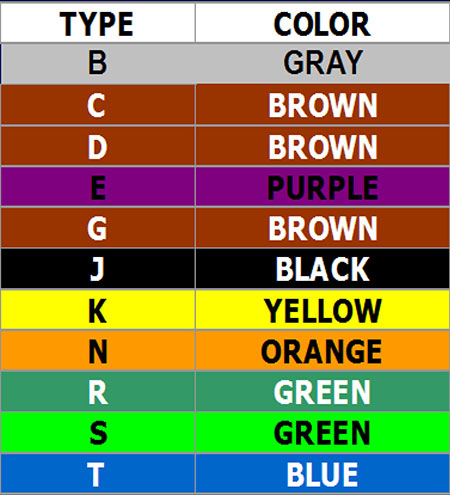

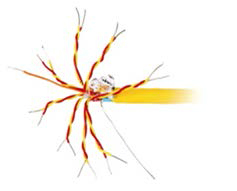
General Thermocouple Theory
- The design of the thermocouple determines how the thermocouple will react to the temperature it is measuring.
- The larger the thermocouple junction is, the slower the thermocouple response time is.
- The smaller the thermocouple junction is, the faster is it is, and the more delicate it is.
- Protection tubes such as stainless steel, alumina or molybdenum prolong the life of the thermocouple, and slow down the response time.
- Several factors must be accounted for when designing a Thermocouple
- What is the expected temperature: Highest and Lowest?
- Is it a long-term measurement; i.e. furnace or short term test?
- What is the response time requirement?
- What is the environment; i.e. air, neutral, vacuum, or flame?
- How will the thermocouple be mounted?
- What is the size and shape of the thermocouple?
- Several factors must be accounted for when designing a Thermocouple, continued
- In the situation of special tests:
- What is the material being tested?
- What is the specific temperature of interest?
- Surface temperature of an object; i.e. exhaust nozzle, gun barrel
- Gas temperature of a flame or explosion
- Interface temperature of two solid materials, i.e. automotive brake pads
- In the situation of special tests:
- Resistive Temperature Detectors (RTDs) are temperature sensors that change resistance as temperature changes.
- Temperature range is from –200 to 600 Degree C. Accuracy is +/- ½ % of the temperature being measured, and can be even better for high accuracy RTD.
- More delicate and sometimes more expensive than thermocouple.
- RTDs are usually either Platinum or Nickel and have several different resistances, such as:
- 100 Ohm Pt or 1000 Ohm Pt
- 100 Ohm Nickel or 200 Ohm Nickel
- The same design questions must be asked for RTDs.
NANMAC
High Temperature and Ultra High
Temperature thermocouples
High Temperature Thermocouples
Available in Thermocouple Types… C, D, S, R & B
- Designed for temperatures to over 1500° C
- 24 or 30 gage wire
- Sheath material to suit application
- Optional support tube
- Variety of termination styles


High Temperature Thermocouples
- Protection tube materials:
- Tantalum (metal)
- Melts at 3000° C
- Good for neutral environment
- Good for thermal cycling; high to low temperatures
- Fair in graphite furnaces
- Bad in oxygen
- Molybdenum (metal)
- Melts at 2600° C
- Good for neutral environment
- Good for thermal cycling; high to low temperatures
- Fair in graphite furnaces
- Bad in oxygen
- Tantalum (metal)
- Protection tube materials:
- Zirconia (ceramic)
- Melts at > 2425° C
- Good in oxygen
- Poor for thermal cycling
- Alumina (ceramic)
- Melts at 2030° C
- Good in oxygen
- Poor for thermal cycling
- Nanmac NC-12 (ceramic)
- Useful up to 1200° C in air
- 1000° C in Molten aluminum – months of continuous use
- 900° C in Zinc – Months of continuous use
- Bad in molten steel or iron
- Zirconia (ceramic)
Ultra-High Temperature Thermocouples
- Industrial applications include:
- Vacuum furnaces
- Graphite lined furnaces or furnaces with graphite heaters
- Petrochemical cracking furnace
- Heat treating and sintering
- Calibration, drift and uniformity & profile studies

- Unique performance characteristics
- Temperatures to 2300° C
- Accurate to +/- 1 % of reading, even at 2000° C
- Prolonged life in harsh environments – 10 times the life of standard sensors
- Up to 70 inches long
- Available in all thermocouple calibrations, including Platinum and Tungsten
- Made to order in less than 3 weeks
NANMAC
High Performance Thermocouples
Self Renewing Thermocouple

- 5 Layer construction
- 3 layers are very thin electrical insulators
- 2 layers are thermocouple alloy ribbon
- All 5 layers are pressed between a split insert

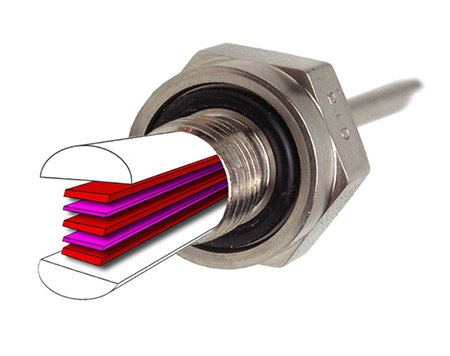
- Entire assembly is then inserted into the required housing
- Housing can be made from any material to match the thermal properties of the test material – in almost any shape
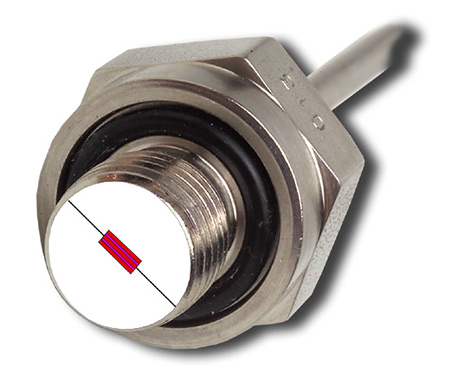
Thermocouple junction is formed by grinding motion across the layers Junction is microscopic, continued grinding forms new junctions Grinding motion can be from shaping, ablation, wear, etc…
Self Renewing Thermocouple
- Patented design
- Millisecond response time
- Thermal device can be made from most any material, in most any shape: Graphite, steel, plastic, phenolic, rubber, wood
- Temperatures to over 2300OC Pressures to over 25,000 psi
- Available in all thermocouple calibrations, including Type B & C

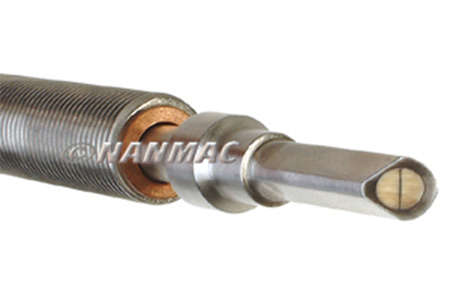
Self Renewing Thermocouples for Research
- Research applications include:
- Rocket nozzle blast temperatures *
- Interface measurements between moving surfaces – brake pads, piston walls, bearings
- Ablation studies
- Unique performance characteristics
- Millisecond response time
- 2 dimension thermal junction, exact location placement
- Sensing device can wear or “erode” up to 0.375” and continue to measure – even during erosion
Self Renewing Thermocouples for Research
- Additional research applications include:
- Shockwave measurements **
- Projectiles and Gun barrel breaches
- Explosions
- Squibs and Igniters
- Unique performance characteristicss
- Sensing device can be machined to match wall contours
- Distinct temperature of interest can be provided: the wall surface temperature (thermally grounded), or the interface {gas, flame, friction} temperature at the wall surface (thermally isolated)


Self Renewing Thermocouples for Industry
- Industrial applications include:
- Plastic processing
- Thermal modeling
- Combustion gases in diesel engines
- Moving wires or textiles
- Brake lining interface temps


- Unique performance characteristics
- True plastic temperatures, unaffected by mold wall heatsink
- Sensor can be shaped or machined to match wall surface contours – Mold walls, cylinder, manifolds, bearings
- Multiple sensors can be located within a single housing with exact positioning
Right-Angle Thermocouples for Research
- Patented design
- Millisecond Response time
- Pressures to over 50,000 psi.
- No conduction Error – provides absolute temperature
- Temperatures > 2300° C

Right-Angle Thermocouples for Research
- Research applications include
- Rocket nozzle exhaust gases
- Profile temperatures within chambers or pipelines
- Flat-bottom, bored holes within walls

- Unique performance characteristics
- Thermocouple junction is thermally isolated from the thermowell / mounting fixture
- Thermowell can be designed with “radiation shield” for specific gas temperatures that are unaffected by chamber wall heating
- Thermal junction (ribbon) is parallel to isotherm

Right-Angle Thermocouples for Industry
- Industrial applications include:
- Gases or liquids in pipelines
- Mixers for food, propellant or pharmaceutical process
- Petrochemical systems
- Smoke stacks and exhaust pipes

- Unique performance characteristics
- Thermal sensor can be “Isolated” for sanitary applications
- Various mounting configurations: In-wall, in-stream, adjustable immersion
- Cryogenic temperatures

Multi-Function Thermocouples for Research
- Combine multiple Eroding & Right-Angle thermocouples within a single housing
- Thermocouple housing made from test-wall material to replicate exact thermal properties
- Heat flux & heat transfer studies, Ablative materials research

- Surface measurements and inwall temperatures at the same time


NANMAC
Quality Program
Nanmac Quality
- Quality Management System per ISO 9001:2008 certified by TUV
- Calibration in accordance with ASTM specification E220-07, traceable to National Institute of Standards and Technology (NIST)
- Calibration process capable of up to 1500° C
- Initial Calibration Tolerances per ASTM E230 and ANSI MC96.1
- Pressure test lab equipment to 50,000 PSI
- Vacuum leak test equipment to 10-7 Torr
- Calibration & Test records on file for minimum of five years after date of manufacture

NANMAC
Quality
Performance
Solutions
© 2025 Nanmac Corporation


